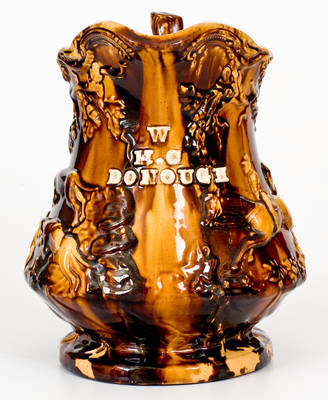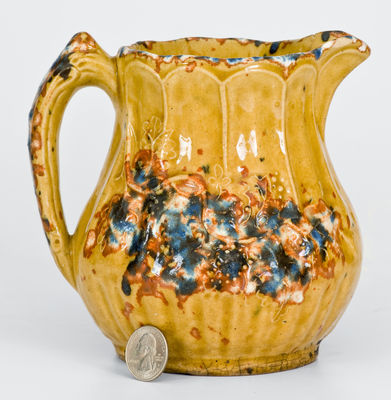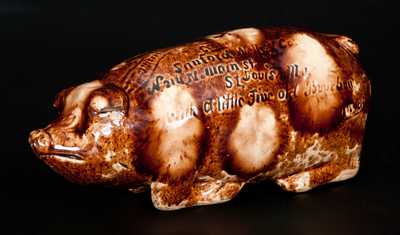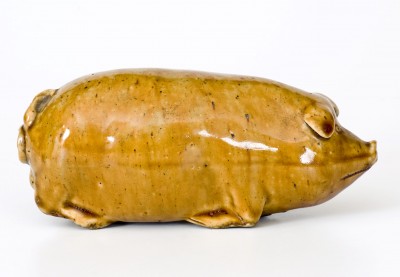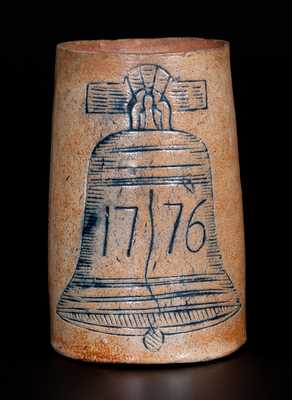Rare Yellowware Log Cabin Bank, Inscribed "Moriah Weir / June 15 / 1858 / WW," made by William Weir at the shop of Thomas Haig, Jr., Philadelphia, PA, molded bank in the form of a log cabin with two chimneys and a hard cider barrel at each end, an open door forming the cabin's coin slot. Surface decorated with streaks of brown over a glazed yellow ground. Underside incised "Moriah Weir / June 15 / 1858 / WW". We have been unable to find any trace of Moriah Weir in period documents, but since the bank was apparently made as a present for him and the potter's initials are "W.W.," it seems likely that the potter was also a Weir. Indeed, William Weir and his brother, George, appear in the 1858 Philadelphia city directory as potters living at 118 Phoenix Street, not far from the Haig family shop. Banks of this type were adopted out of campaign symbols from William Henry Harrison's Whig Party, which, during the Election of 1840, used a log cabin and cider to declare that Harrison was in support of the common man. William Weir, a previously-undocumented potter, was born in New York circa 1836, and is probably the same William Weir who, along with his brother George, appear living in New York City in the year 1850, the sons of a coach maker named Abram Weir. At least two extant cabin banks from a similar mold are signed by Thomas Haig, Jr. and dated 1852. When Weir made his bank, the Haigs were operating a shop as "James and Thomas Haig" along with their sister, Ann. According to Susan Myers in Handcraft to Industry, Thomas Haig, Jr. may have been operating a second nearby shop during the time period, which would help account for the fact that the cabin banks bear only his signature, not his brother's or sister's. Weir was quite clearly working with the Haigs in 1858 when he made this example. Provenance: A fresh-to-the-market example, recently found in Oklahoma. Two reglued corners to base. Additional losses to base. Door with slot broken out. One chimney reglued. Wear to both chimneys. Some small worn spots to cabin. L 4 1/2" ; H 4 1/2".









